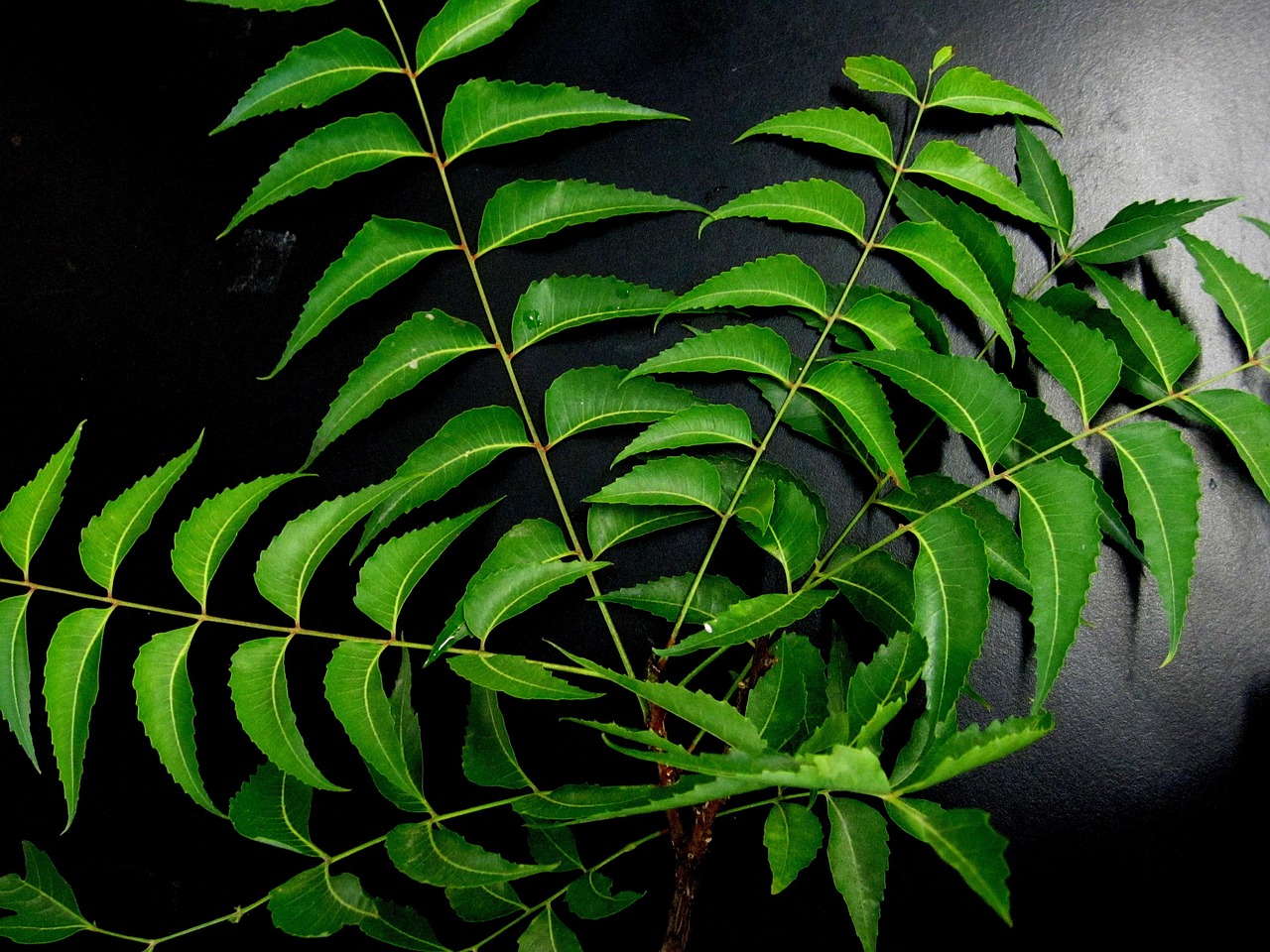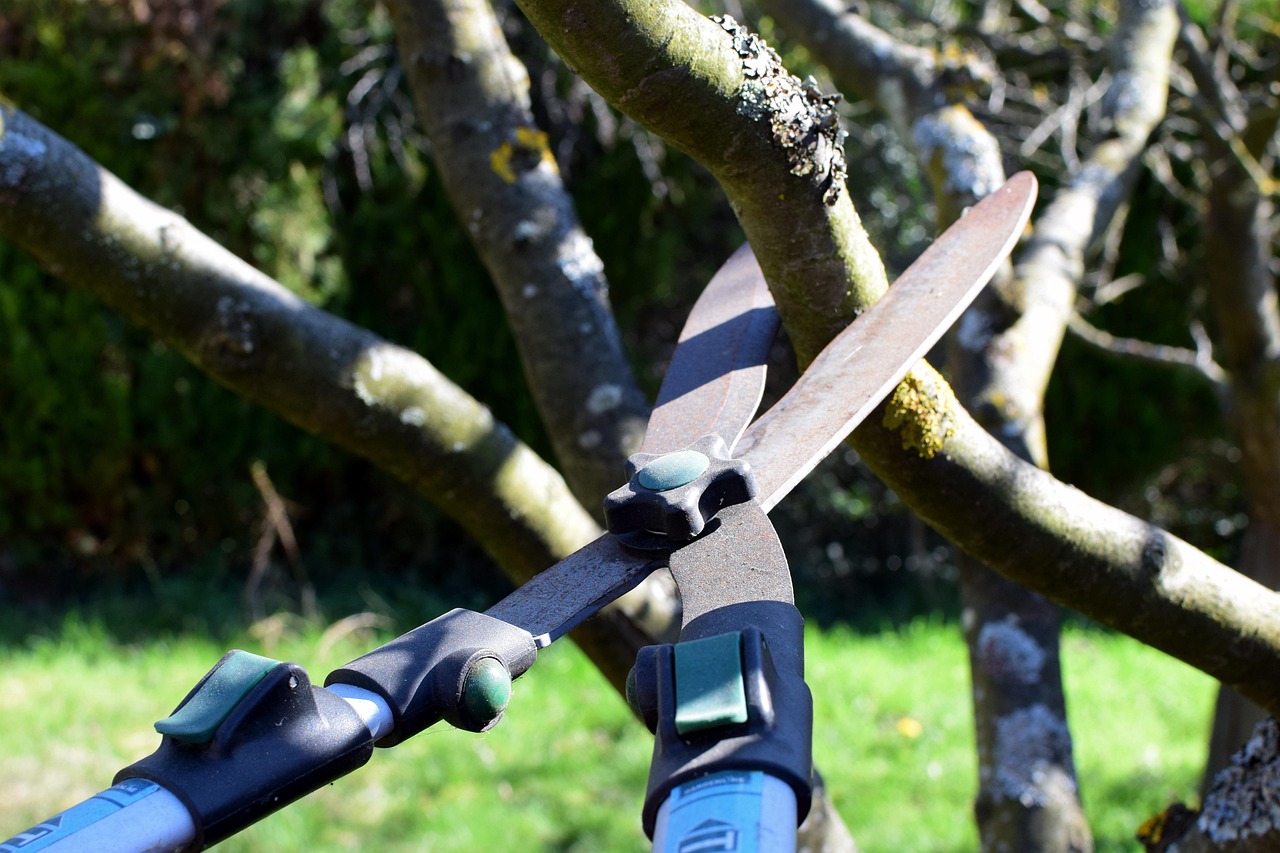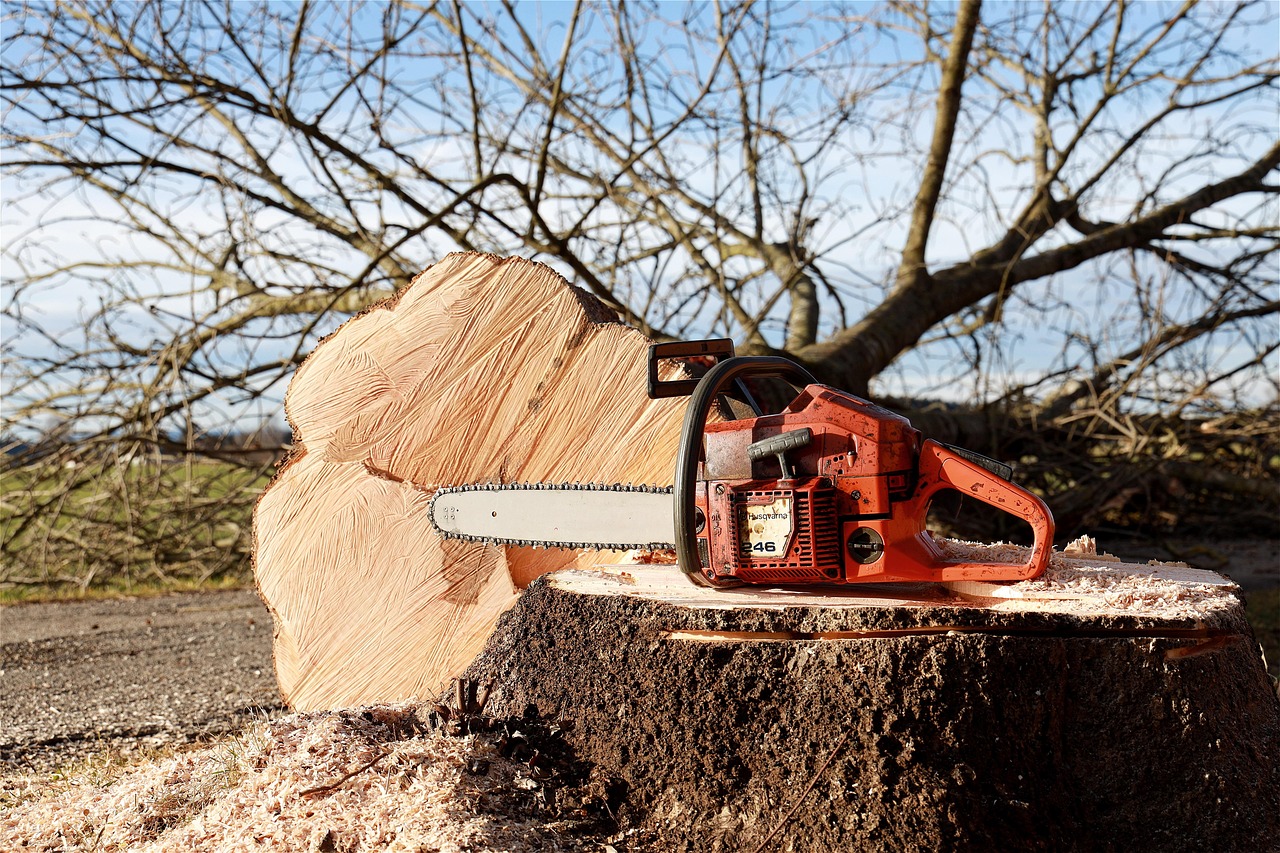Pruning neem trees is essential for maintaining healthy growth and preventing pest infestations. Proper pruning techniques enhance airflow, improve sunlight exposure, and encourage the development of strong branches, leading to a pest-free environment.
The neem tree, known scientifically as Azadirachta indica, is celebrated for its numerous benefits. It is native to the Indian subcontinent but has gained popularity worldwide due to its medicinal properties and use in organic gardening. Neem trees are resilient and can thrive in various climates, making them a favorite among gardeners and farmers alike.

One of the key practices in neem tree cultivation is pruning. Regular pruning not only shapes the tree but also plays a significant role in pest management. Pests are often attracted to dense foliage, where they can hide and breed. By keeping the tree well-pruned, you can reduce pest habitats and promote healthier growth.
Importance of Pruning Neem Trees
Pruning neem trees serves multiple purposes that contribute to their overall health and productivity. Here are some of the main reasons why pruning is essential:
- Enhances Air Circulation: Proper pruning opens up the tree’s canopy, allowing better air flow. This helps in reducing humidity levels around the foliage, which can deter pests and fungal diseases.
- Improves Sunlight Exposure: By removing crowded branches, sunlight can penetrate deeper into the tree. This promotes photosynthesis and healthier leaf production.
- Encourages Strong Growth: Pruning helps to create a well-structured tree with fewer weak branches. Stronger branches are less likely to break under stress or disease.
- Reduces Pest Infestation: A well-pruned neem tree is less appealing to pests. Less foliage means fewer hiding spots for insects.
- Promotes Better Fruit Production: Pruning enhances fruit quality and yield by directing energy to healthy branches that bear fruit.
The ideal time to prune a neem tree is during its dormant season, typically in late winter or early spring. This timing ensures that the tree can recover quickly and grow vigorously once the growing season begins. However, light pruning can be done throughout the year if necessary.

Tools Needed for Pruning
Before starting the pruning process, it is crucial to gather the right tools. Having the correct equipment will make the task easier and ensure clean cuts that promote healing. Here are some essential tools for pruning neem trees:
- Hand Pruners: Ideal for cutting small branches and stems, hand pruners are essential for detailed work.
- Loppers: These are useful for cutting thicker branches that are too large for hand pruners.
- Saw: For larger branches, a pruning saw will help make clean cuts without damaging the tree.
- Gloves: Protect your hands while working with sharp tools and rough branches.
- Pruning Sealant (optional): While not always necessary, a sealant can help protect larger cuts from pests and diseases.
Pruning Techniques for Neem Trees
When pruning neem trees, several techniques can be applied depending on the desired outcome. It’s important to follow these steps to ensure effective pruning:
- Assess the Tree: Take a good look at the tree before you begin. Identify any dead, damaged, or diseased branches that need to be removed.
- Start with Dead or Diseased Wood: Always remove any dead or diseased branches first. This prevents diseases from spreading to healthy parts of the tree.
- Crown Thinning: Thin out crowded areas by removing weak branches. This increases air flow and sunlight penetration.
- Crown Raising: If necessary, raise the crown by removing lower branches. This can improve access and reduce competition for light among lower plants.
- Avoid Topping: Never top a neem tree as it can lead to weak growth and increased pest problems.
By employing these techniques, gardeners can maintain the health of their neem trees while minimizing the risk of pest infestations. Proper pruning not only improves the aesthetic appeal of the tree but also contributes significantly to its overall vitality.

Pest Management Through Pruning
Pest management is a crucial aspect of neem tree care. While neem oil is often utilized as a natural pesticide, maintaining a well-pruned tree can reduce reliance on chemical treatments. A healthy neem tree will naturally repel pests due to its strong defenses.
The following table outlines common pests that affect neem trees and how proper pruning can help manage these threats:
| Pest | Description | Pruning Benefit |
|---|---|---|
| Aphids | Small sap-sucking insects that can weaken the tree. | Pruning reduces dense foliage where aphids thrive. |
| Whiteflies | Tiny insects that feed on plant sap, leading to yellowing leaves. | A well-pruned tree discourages whitefly infestations by improving air circulation. |
| Spider Mites | Mites that create webs on leaves and suck out plant juices. | Thinning out foliage makes it harder for spider mites to establish colonies. |
The relationship between pruning and pest management is clear. A proactive approach to maintaining your neem tree will lead to healthier plants and fewer pest issues overall.

Seasonal Pruning Techniques for Neem Trees
Understanding when to prune neem trees is as important as knowing how to prune them. Seasonal pruning can lead to optimal growth and health for your neem tree. Each season presents unique opportunities for pruning, and specific techniques can enhance the tree’s resilience against pests.
Spring Pruning
Spring is a vital time for neem trees as they begin their growth cycle. Pruning in early spring allows you to remove any damage from winter while stimulating new growth. Here are some key points to consider:
- Remove Dead or Damaged Wood: Inspect the tree for any branches that did not survive the winter. Cut these branches back to healthy wood.
- Thin Crowded Areas: If you notice overcrowding in certain sections, thin out these areas. This promotes better sunlight exposure and air circulation.
- Shape the Tree: Spring is also a great time to shape your neem tree. Aim for a well-balanced canopy that allows light to penetrate to lower leaves.
Summer Pruning
Summer pruning is less common but can be beneficial for certain situations. It focuses on maintaining the tree’s shape and controlling its height. Consider these tips:
- Light Pruning: If you notice excessive growth, perform light pruning to maintain size without stressing the tree.
- Remove Suckers: Check for suckers or water sprouts, which can drain energy from the main branches. Remove them promptly.
- Monitor for Pests: Use this time to observe pest activity. If you notice an infestation, consider targeted interventions.
Fall Pruning
As the growing season ends, fall pruning can help prepare the neem tree for winter. This practice enhances its chances of surviving cold temperatures:
- Final Cleanup: Remove any dead or diseased wood that may have developed over the summer. This prevents potential problems during winter.
- Shape Maintenance: Ensure the tree maintains its shape as it prepares for dormancy. A well-shaped tree will be less susceptible to damage from snow or ice.
- Avoid Heavy Pruning: It is advisable to avoid heavy pruning in fall, as this can stimulate new growth that will not survive the winter.
Understanding Neem Tree Growth Patterns
To effectively prune a neem tree, it is essential to understand its growth patterns. Neem trees typically have a fast growth rate under optimal conditions. They can grow up to 30-40 feet in height with a wide canopy. Understanding these patterns helps in planning effective pruning strategies.
Neem trees generally grow in a pyramidal shape when young, gradually expanding into a more rounded shape as they mature. Here are some common growth characteristics:
- Rapid Vertical Growth: Young neem trees tend to grow taller quickly, which may necessitate pruning to control height.
- Lateral Growth: As the tree matures, lateral branches spread out significantly, requiring regular maintenance to prevent overcrowding.
- Leaf Distribution: Leaves grow in clusters. Pruning should focus on maintaining an even distribution across the canopy.
Signs Your Neem Tree Needs Pruning
A healthy neem tree requires regular observation. Recognizing signs that indicate the need for pruning will help maintain its health and vitality. Here are some key indicators:
- Overcrowded Branches: If branches are overlapping or densely packed, it’s time for thinning.
- Yellowing Leaves: Yellow leaves may indicate poor sunlight exposure or nutrient deficiencies due to overcrowding.
- Pest Infestations: An increase in pests may signal that the tree is too dense and needs more air circulation.
- Dead or Dying Branches: Any signs of dead branches should be addressed immediately to prevent disease spread.
Post-Pruning Care for Neem Trees
After pruning, proper care is crucial to ensure your neem tree recovers well. Here are some essential post-pruning care tips:
- Watering: Ensure the tree receives adequate water after pruning. This aids in recovery and promotes new growth.
- Nutrient Supply: Consider applying a balanced fertilizer to replenish nutrients lost during pruning.
- Pest Monitoring: Keep an eye on the tree for any signs of pests or diseases that may emerge after pruning.
Caring for your neem tree post-pruning reinforces the benefits of your hard work and contributes to its overall health. With attention and proper techniques, your neem tree can thrive and remain pest-free.
Common Diseases Affecting Neem Trees
Neem trees are generally resilient, but they can still be susceptible to certain diseases. Understanding these common ailments is crucial for maintaining a healthy tree and ensuring effective pest management. Here are some diseases that may affect neem trees:
Powdery Mildew
Powdery mildew is a fungal disease characterized by white, powdery spots on leaves and stems. This disease thrives in warm, dry conditions and can weaken the tree if not managed promptly. Here are some key points:
- Symptoms: White powdery spots on the upper surfaces of leaves, which may eventually turn yellow and drop off.
- Management: Improve air circulation by pruning crowded branches. Use organic fungicides if needed.
- Prevention: Water at the base of the tree and avoid overhead watering to reduce humidity around the foliage.
Leaf Spot
Leaf spot is another common issue that can affect neem trees. This disease often appears as dark or discolored spots on leaves, leading to premature leaf drop.
- Symptoms: Dark brown or black spots on leaves, often surrounded by a yellow halo.
- Management: Remove affected leaves and ensure proper sanitation around the tree. Fungicidal treatments may also be necessary.
- Prevention: Maintain good air circulation and avoid watering the leaves directly.
Pest Management Strategies
Effective pest management is essential for the health of your neem tree. While pruning helps reduce pest habitats, additional strategies can enhance your pest control efforts. Here are some pest management techniques:
Cultural Practices
Cultural practices involve modifying how you care for your neem tree to minimize pest issues. Here are some practices to consider:
- Companion Planting: Planting compatible species nearby can deter pests. For example, marigolds and basil can repel harmful insects.
- Crop Rotation: If you have multiple neem trees, rotate their locations annually to disrupt pest life cycles.
- Regular Monitoring: Frequently inspect your tree for signs of pests or diseases. Early detection is key to successful management.
Biological Control
Introducing beneficial insects can be an effective way to manage pests naturally. Here are some beneficial insects that help control neem tree pests:
- Lacewings: These insects feed on aphids and other soft-bodied pests.
- Ladybugs: Known for their appetite for aphids, ladybugs can significantly reduce pest populations.
- Parasitic Wasps: Certain wasps lay eggs inside pest insects, leading to their natural demise.
Using Neem Oil for Pest Control
Neem oil is derived from the seeds of the neem tree and is an effective natural pesticide. Its applications can significantly enhance pest management strategies for your neem tree. Here’s how to use neem oil effectively:
Application Methods
Neem oil can be applied in several ways to combat pests:
- Foliar Spray: Mix neem oil with water and a mild soap. Spray directly onto affected leaves, ensuring complete coverage.
- Soil Drench: Dilute neem oil in water and apply it to the soil around the tree’s base. This method helps protect against root pests.
- Drenching Seeds: Using neem oil when planting seeds can help protect young plants from early pest infestations.
Safety Tips
While neem oil is generally safe, it’s important to follow certain guidelines during application:
- Avoid Direct Sunlight: Apply neem oil in the evening or on cloudy days to prevent leaf burn.
- Test First: Always test on a small area of the tree before full application to ensure no adverse reactions occur.
- Keep Away from Pollinators: Avoid spraying when bees and other pollinators are active to protect beneficial insects.
The Role of Nutrition in Neem Tree Health
Adequate nutrition is vital in maintaining a healthy neem tree that can resist pests and diseases. Healthy soil leads to strong root systems, which support overall tree health. Here are some aspects of nutrition to consider:
Nutrient Requirements
The following nutrients are essential for the healthy growth of neem trees:
- Nitrogen: Supports leaf growth and overall vigor.
- Phosphorus: Important for root development and flowering.
- Potassium: Enhances disease resistance and overall plant health.
Fertilization Practices
The proper fertilization schedule will depend on the age and condition of your neem tree. Here are guidelines for effective fertilization:
- Young Trees: Use a balanced fertilizer every 6-8 weeks during the growing season.
- Mature Trees: Fertilize once or twice a year with a slow-release formula suitable for trees.
- Organic Options: Consider organic fertilizers such as compost or well-rotted manure to enrich the soil naturally.
Nourishing your neem tree not only promotes growth but also enhances its ability to resist pests and diseases. By focusing on nutrition alongside pruning and pest management strategies, you can ensure a thriving, pest-free neem tree.
Additional Considerations for Neem Tree Care
In addition to pruning, pest management, and proper nutrition, there are several other factors to consider for maintaining a healthy neem tree. These factors can significantly influence the tree’s resilience and overall growth.
Soil Quality and Drainage
The quality of the soil plays a vital role in the health of your neem tree. Neem trees prefer well-drained, loamy soil that is rich in organic matter. Here are some tips for enhancing soil quality:
- Soil Testing: Conduct regular soil tests to determine pH and nutrient levels. Aim for a slightly acidic to neutral pH (6.0 to 7.0).
- Improving Drainage: If the soil retains too much water, consider adding organic matter such as compost or sand to improve drainage.
- Mulching: Apply a layer of organic mulch around the base of the tree to retain moisture, suppress weeds, and regulate soil temperature.
Environmental Factors
Environmental conditions can greatly influence the health and growth of your neem tree. Here are key environmental factors to monitor:
- Sunlight: Neem trees thrive in full sunlight. Ensure your tree receives at least 6-8 hours of direct sunlight daily.
- Temperature: Neem trees prefer warm temperatures and can tolerate heat. However, extreme cold can damage young trees.
- Humidity: While neem trees are drought-tolerant, they prefer moderate humidity. Ensure adequate watering during dry spells.
Seasonal Monitoring
Seasonal changes can affect your neem tree’s health. Regular monitoring throughout the year can help you identify issues early:
- Spring: Look for new growth and signs of pests as the growing season begins. This is also the time to prune and fertilize.
- Summer: Monitor for pests, especially during hot weather. Regular watering may be necessary if rainfall is insufficient.
- Fall: Prepare for winter by removing any dead leaves or branches and applying mulch around the base.
- Winter: Protect young trees from frost by covering them or moving potted trees indoors when temperatures drop.
Final Thoughts
The care and cultivation of neem trees require attention to detail, particularly when it comes to pruning, pest management, and nutrition. By following the guidelines outlined in this article, you can create an environment where your neem tree can thrive, producing not only beautiful foliage but also valuable medicinal properties.
Remember that regular observation is key to successful neem tree maintenance. Early detection of pests or diseases can save you time and resources in the long run. Additionally, integrating organic practices such as using neem oil and promoting beneficial insects will enhance your efforts toward sustainable gardening.
As you continue to nurture your neem tree, keep in mind that each tree is unique. Factors such as location, climate, and individual growth patterns will influence how you care for it. With patience and dedication, your neem tree can flourish, providing beauty and benefits for many years to come.
In conclusion, effective neem tree care is a combination of knowledge and practice. Implementing proper pruning techniques, monitoring for pests, ensuring nutrient-rich soil, and understanding environmental factors will contribute to a robust and pest-free neem tree. Embrace these practices to enjoy a thriving garden that showcases the remarkable qualities of this versatile plant.
